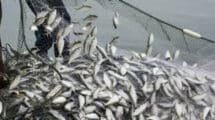Does MSP (Minimum Support Price) benefit farmers?
In 2014-2015, the Minimum Support Price (MSP) for tur (pigeon pea) was ₹ 4,350 per quintal. In 2021-22, it will be ₹ 6,300 per quintal. But farmers don’t sell to government procurement agencies in Latur city, which has hundreds of dal (pulse) mills and is one of the largest grain markets in Maharashtra. Many farmers would rather sell their crops on the open market, where they can get ₹ 9,000 per quintal instead of ₹ 6,300 at the MSP.
For the Kharif season of 2022–2023, the government has set an MSP of ₹ 6,600, which is an increase of ₹ 300 per quintal and a return of 60% on cost. But the people who make tur in the Latur area are unhappy. They say that the government’s figure of ₹ 4,131 per quintal for the cost of production is not based on what farmers really pay for their inputs. Farmers who grow tur hope that the market prices will stay higher than the MSP even during this season.
Also Read | How many farmers are aware of the Minimum Support Price (MSP)?
According to the government, raising the MSP for Kharif crops in the Marketing Season 2022-23 is in line with setting the MSP at least 50% above the all-India weighted average Cost of Production. The highest return on MSP over the all-India weighted average Cost of Production is for bajra, at 85%. This is followed by tur, at 60%, urad, at 59%, sunflower, at 56%, soybean, at 53%, and groundnut, at 53%. (51 percent).
How many farmers benefit (receive money) from the MSP?
Even though the government says that an increase in MSP will help farmers, the facts show otherwise. According to the 77th round of the National Sample Survey (NSS), the amount of output sold by households under MSP ranges from 0% to 24.7% (except for sugarcane). In August of last year, the Agriculture Ministry told the Lok Sabha that a little more than 14% of farmers who own land benefit from MSP. In 2019–20, MSP helped about 2,04,63,590 farmers, and in 2020–21, it helped about 2,10,07,563 farmers.
During the Green Revolution, the MSP and procurement support policy was made for cereals. The policy should be looked at again. Farmers, especially in Punjab and Haryana, are less likely to grow other crops because of MSP, said farmer leader Anil Ghanwat, who was on the Supreme Court-appointed Committee on Farm Laws.
MSP and the market
MSP is a way for the Centre to get into the market and protect farmers from a sharp drop in farm prices. The data show that both the MSP and the market price are always changing. Farmers say that most of the time, they have to sell their crops at prices lower than MSP.
‘Anything that is made needs to be sold at a price that makes sense. MSP is a suggested floor price that protects farmers from price drops that are too big, especially during harvest. The Supreme Court Committee report said, ‘The government does not have the money to buy whatever is made of all 23 commodities that are currently covered by
MSP.’
Also Read | If govt doesn’t pass a law MSP, farmers will fight ‘a fierce battle’ against it: Satya Pal Malik.
But according to the Ministry of Agriculture, the market as a whole responds to the announcement of MSP and the government’s procurement operations. This means that private buyers pay the MSP or more for a number of crops that have been notified.
Purchasing cost
According to a Committee appointed by the Supreme Court, the cost to the Food Corporation of India of buying, storing, and distributing foodgrains is about 40% more than the procurement price. For rice, this means an extra ₹ 1,200 per quintal and for wheat, an extra ₹ 800 per quintal.
(Inputs from News Agency).


















Add Comment